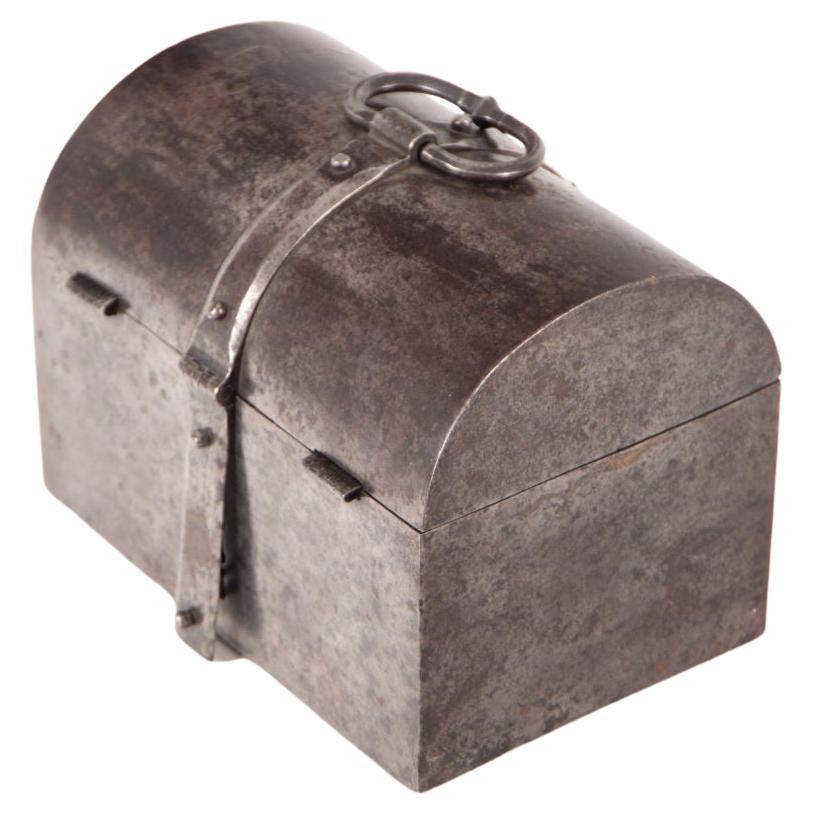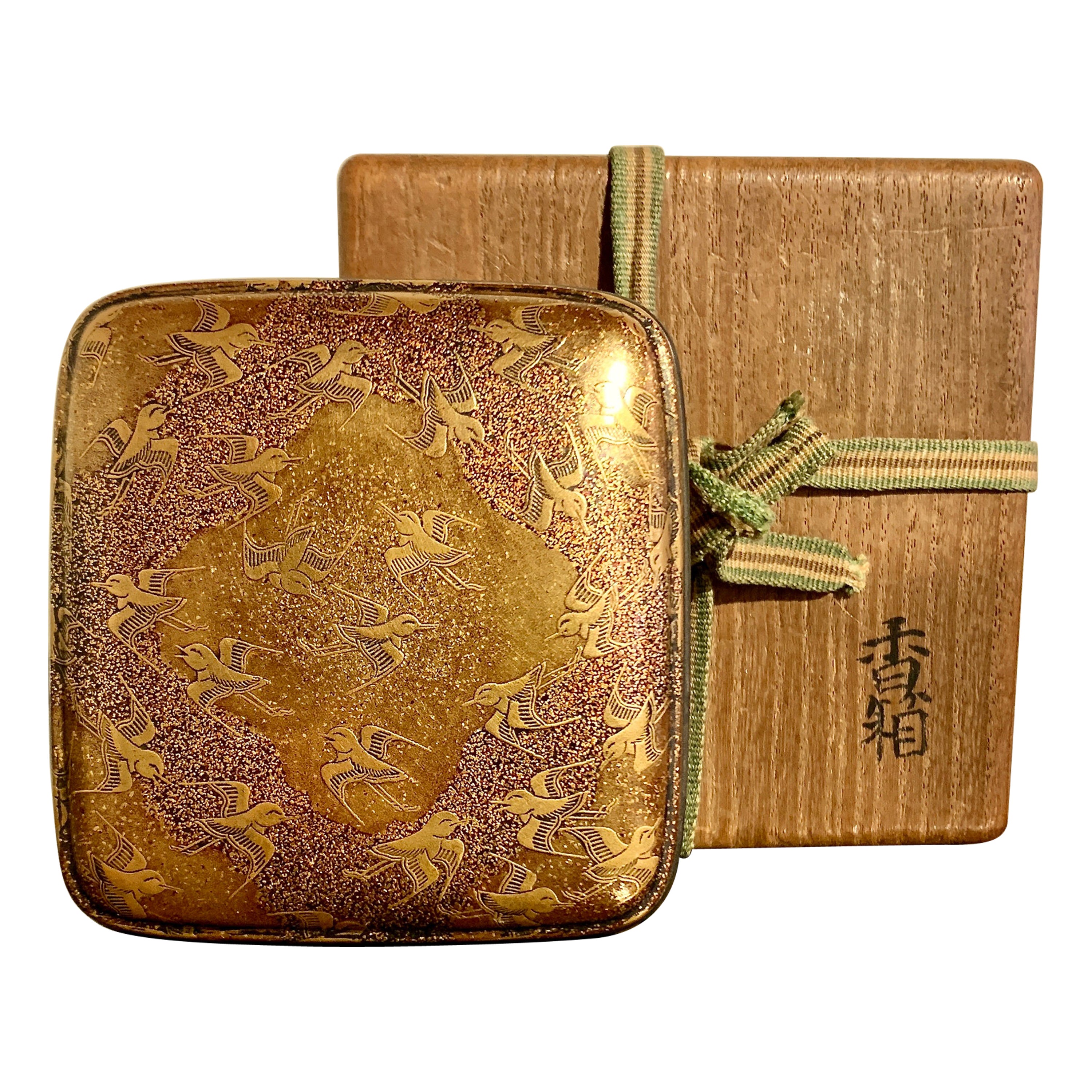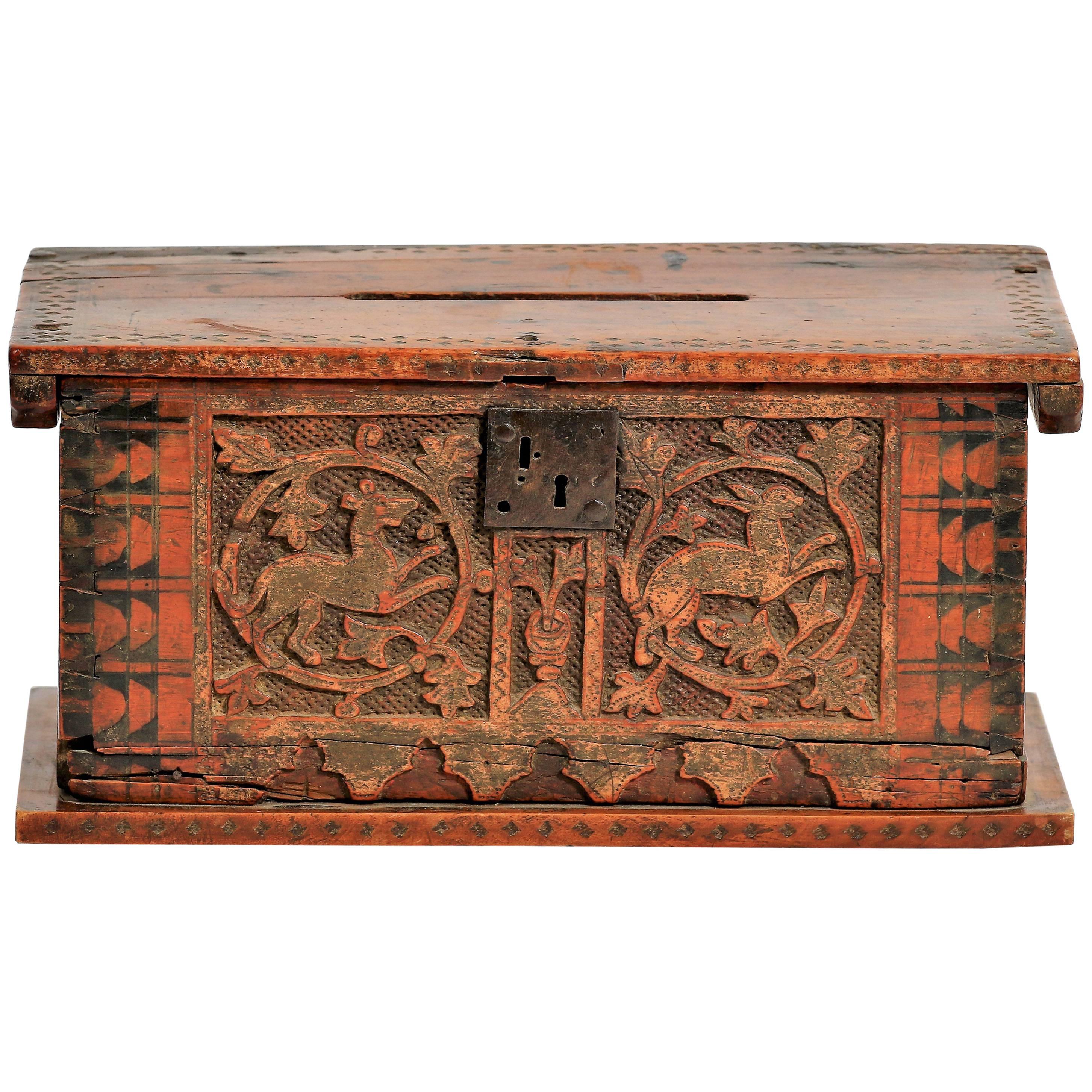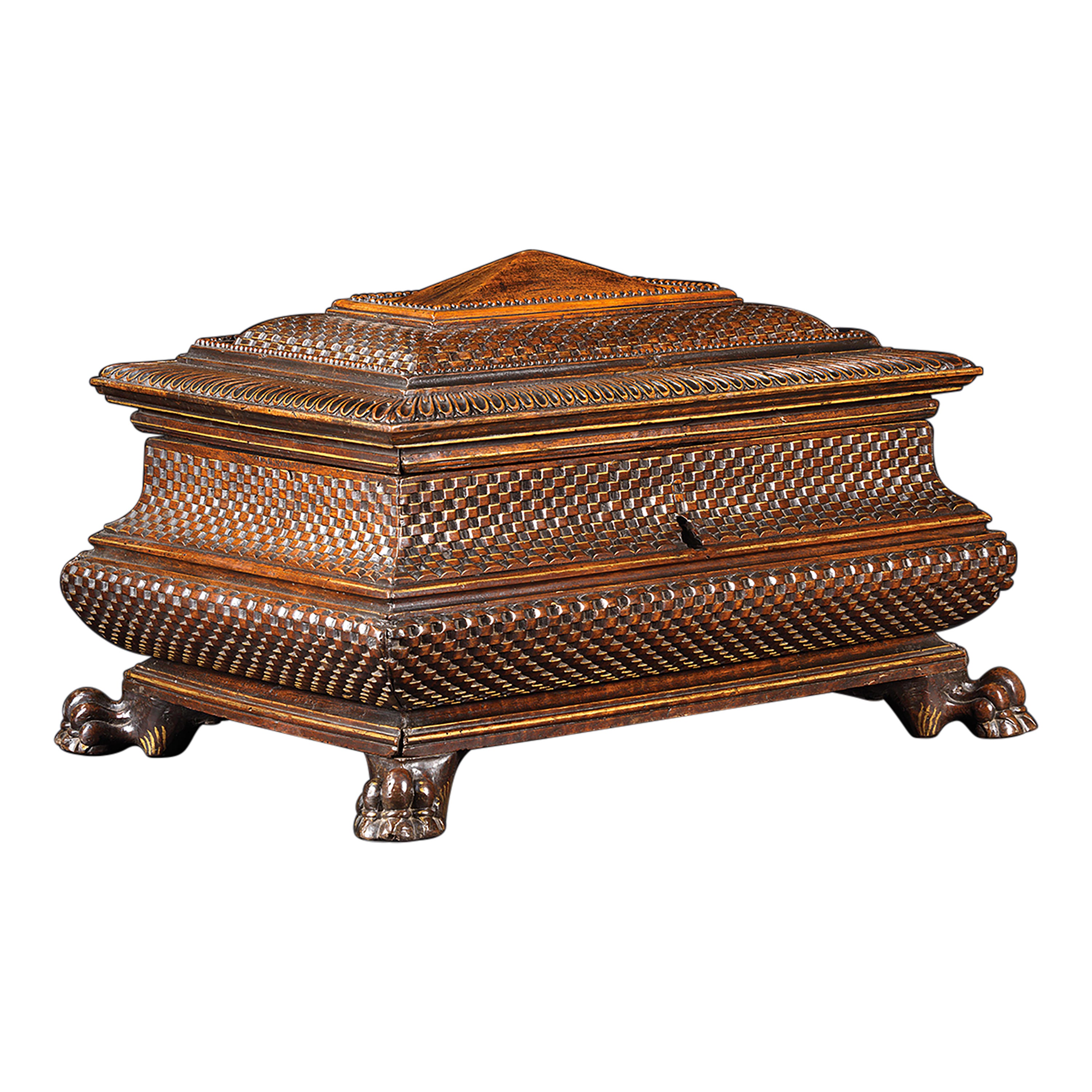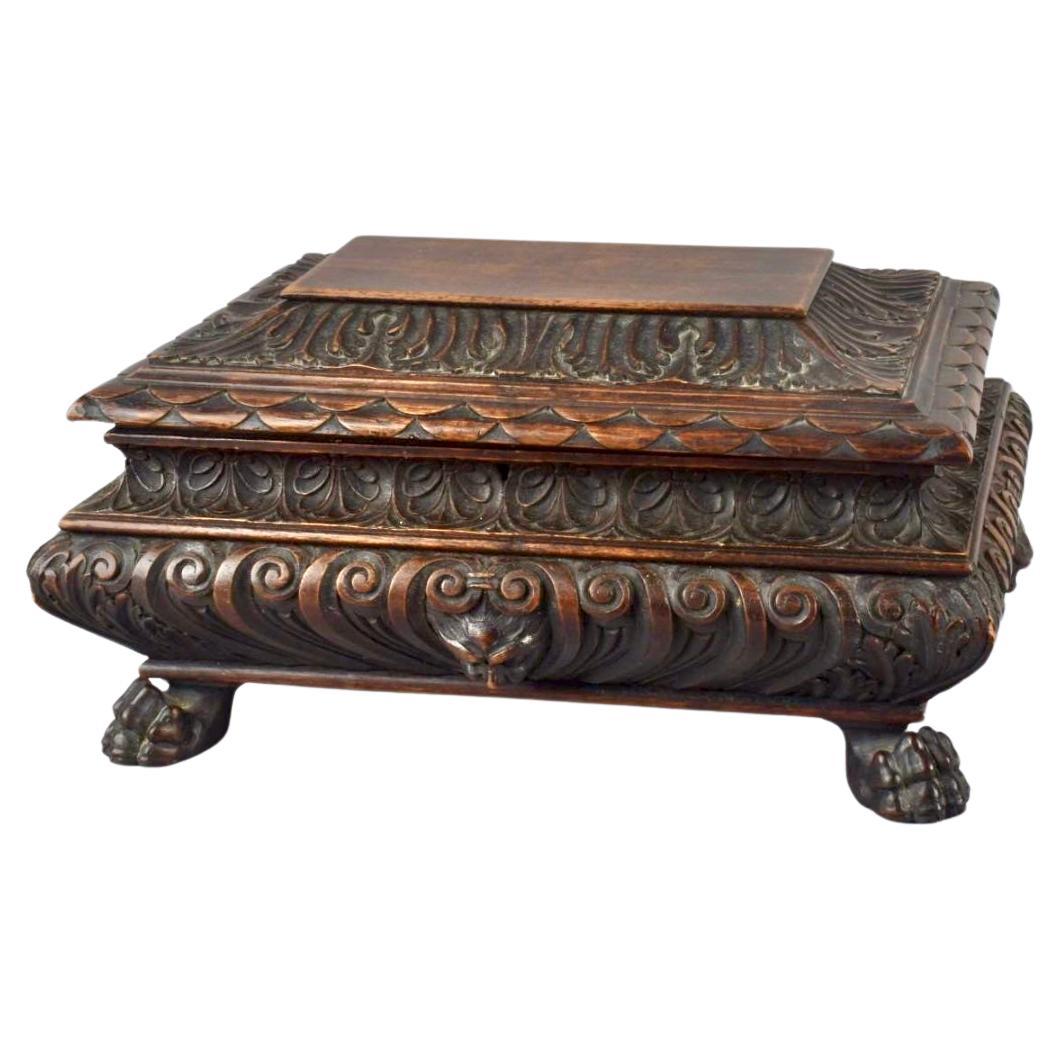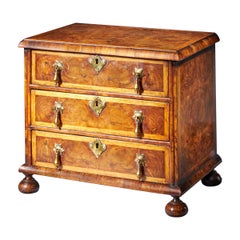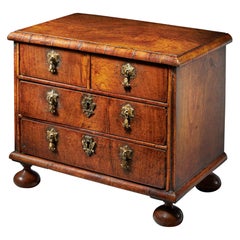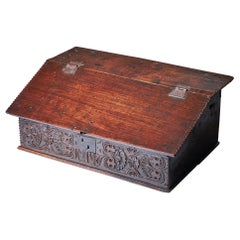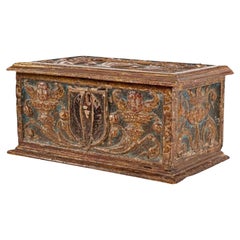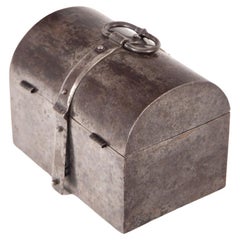
Elizabethan 16th Century Diminutive Cedar Wood Table Casket/Cabinet or Desk Box
View Similar Items
Want more images or videos?
Request additional images or videos from the seller
1 of 14
Elizabethan 16th Century Diminutive Cedar Wood Table Casket/Cabinet or Desk Box
About the Item
- Dimensions:Height: 16.15 in (41 cm)Width: 15.75 in (40 cm)Depth: 9.85 in (25 cm)
- Materials and Techniques:
- Period:
- Date of Manufacture:1570-1600
- Condition:Wear consistent with age and use.
- Seller Location:Oxfordshire, GB
- Reference Number:1stDibs: LU4936227317922
About the Seller
5.0
Recognized Seller
These prestigious sellers are industry leaders and represent the highest echelon for item quality and design.
1stDibs seller since 2019
20 sales on 1stDibs
Typical response time: 1 hour
Associations
LAPADA - The Association of Arts & Antiques Dealers
More From This SellerView All
- Miniature William and Mary 17th Century Diminutive Olive Oyster Chest, C.1690Located in Oxfordshire, United KingdomA Fine Miniature William and Mary 17th Century Diminutive Olive Oyster chest. From the reign of King William & Queen Mary (1688-1702), England. The...Category
Antique 17th Century English William and Mary Commodes and Chests of Dra...
MaterialsOlive
- Rare 17th Century Miniature William and Mary Walnut Table Top Chest, circa 1690Located in Oxfordshire, United KingdomA fine miniature William and Mary 17th century diminutive walnut chest. From the reign of King William & Queen Mary (1688-1702), England. The cross...Category
Antique 17th Century English William and Mary Commodes and Chests of Dra...
MaterialsBrass
- 17th Century Charles II Carved Oak Writing Box or Desk Box circa 1670 EnglandLocated in Oxfordshire, United KingdomA Rare 17th-Century Charles II Carved Oak Writing or Desk Box, Circa 1660. England. The box opens on the original butterfly hinges to reveal a fitted interior of three oak-lined dra...Category
Antique 17th Century English Charles II Decorative Boxes
MaterialsOak
- Mid 17th Century Dutch Engraved Silver Wedding Casket or knottekist, Circa 1660Located in Oxfordshire, United KingdomA museum-grade mid-17th century Dutch silver marriage casket or knottekistje, circa 1660. Raised on solid silver bun feet the miniature casket is profusely engraved to all faces depicting a courting couple and architecture entwined in scrolling foliage. The reverse of the casket depicts the last supper, however, if you look closely, you can see a boy stealing food or wine from underneath! Possibly, this is the courting gentleman showing that he had a sense of humour. The scratch lined moulded top is surmounted with an intricate handle (once gilt) and floral patera to the centre. There are two inscriptions each within a cartouche 'In Lÿfde Beltact het al' and 'Getrouw tot in den doot' which loosely translates to 'faithful until the death' and 'love is everything'. Wedding caskets...Category
Antique 17th Century Dutch Baroque Decorative Boxes
MaterialsSilver
- 17th C. Diminutive William and Mary Kingwood Strongbox or Coffre Fort, C. 1690Located in Oxfordshire, United KingdomA William and Mary Kingwood / Princes Oyster Strongbox or Coffre Fort of Diminutive Proportions, Circa 1680-1700, England. Adorned with highly decorative gilt brass strapwork and decorated entirely in knife cut oysters of kingwood, this box is fit for the most discerning of collectors. The large gilt brass shield-shaped clasp opens on a push-spring release to reveal a box interior lined in rosewood with one drawer and securing bolts. Once the lid is opened you can reach inside to slide the original gilt brass bolt lock to open the fall. Once the fall is open you will find a drawer lined in oak and simulated kingwood. The box appears decorative, but it was also very difficult to break open or steal. It has a strong lock to the centre and two bolts concealed in the sides, so that it could be screwed down into floorboards if necessary or that of a horse-drawn carriage. Strong boxes veneered in oysters of Princewood such as this were luxury objects. The cabinet-makers who would have constructed and veneered the carcase apparently sold them, often using tropical hardwood veneers, and mounted it with sets of mounts, handles and locks bought in from brass founders. The elaborate veneering and conspicuous gilded brass mounts show that the appearance of these objects was important. Thomas Pistor, of Ludgate Hill, London worked with the renowned cabinetmaker Gerrit Jensen...Category
Antique 17th Century British William and Mary Decorative Boxes
MaterialsKingwood
- 17th Century William and Mary Olive Oyster Chest on Stand or Table BoxLocated in Oxfordshire, United KingdomA fine and extremely rare 17th century William and Mary baroque olive oyster chest on stand or 'table box', circa 1675-1690. The exquisite...Category
Antique Late 17th Century English William and Mary Commodes and Chests o...
MaterialsOlive
You May Also Like
- Spanish Renaissance Casket of the 16th CenturyBy Europa AntiquesLocated in Madrid, ESSpanish Renaissance casket, 16th century In carved, polychrome and gilded wood decorated with a vase with horns of plenty, heads of cherubs and fruits. In the lock a shield with two ...Category
Antique 16th Century Dutch Baroque Decorative Boxes
MaterialsWood
$3,997 Sale Price20% Off - Rare 16th Century Nuremberg BoxBy Europa AntiquesLocated in Madrid, ESRare 16th century Nuremberg box In iron, measurements: 13 x 18 x 12 cm Good condition.Category
Antique 16th Century German Baroque Jewelry Boxes
MaterialsIron
$3,997 Sale Price20% Off - 16th-Century Indo-Portuguese Colonial Mother-of-pearl Gujarat CasketLocated in Amsterdam, NLAn exceptional Indo-Portuguese colonial mother-of-pearl veneered casket with silver mounts India, Gujarat, 2nd half of the 16th century, the silver mounts Goa or probably Lisbon Measures: H. 16 x W. 24.6 x D. 16.1 cm An exceptional Gujarati casket with a rectangular box and truncated pyramidal lid (with slopes on each side and a flat top) made from exotic wood, probably teak (Tectona grandis), covered with a mother-of-pearl mosaic. The tesserae, cut from the shell of the green turban sea snail (Turbo marmoratus, a marine gastropod) in the shape of fish scales, are pinned to the wooden structure with silver ball-headed nails. The casket is set on bracket feet on the corners. The masterfully engraved decoration of the silver mounts follows the most refined and erudite Mannerist repertoire of rinceaux and ferroneries dating from the mid-16th century. The high quality and refinement of the silver mounts and, likewise, the silver nails that replaced the original brass pins used to hold the mother-of-pearl tesserae in place indicate the work of a silversmith probably working in Lisbon in the second half of the 16th century. The Indian origin of this production, namely from Cambay (Khambhat) and Surat in the present state of Gujarat in north India, is, as for the last three decades, consensual and fully demonstrated, not only by documentary and literary evidence - such as descriptions, travelogues and contemporary archival documentation - but also by the survival in situ of 16th-century wooden structures covered in mother-of-pearl tesserae. A fine example is a canopy decorating the tomb (dargah) of the Sufi saint, Sheik Salim Chisti (1478-1572) in Fatehpur Sikri in Agra district in the state of Uttar Pradesh, north India. This is an artistic production, geometric in character and Islamic in nature, where usually the mother-of-pearl tesserae form complex designs of fish scales or, similar to the dishes also made using the same technique, with the thin brass sheets and pins, stylized lotus flowers. The truncated pyramidal shape corresponds, like their contemporary tortoiseshell counterparts also made in Gujarat, to a piece of furniture used in the Indian subcontinent within the Islamic world prior to the arrival of the first Portuguese. This shape, in fact, is very old and peculiar to East-Asian caskets, chests or boxes used to contain and protect Buddhist texts, the sutras. A similar chest is the famous and large reliquary chest from Lisbon cathedral that once contained the relics of the city's patron saint, Saint Vincent. Both match in shape, having the same kind of socle or pedestal and bracket feet, and in their engraved silver mountings, featuring the same type of refined, erudite decoration. Their differences lie in the silver borders that frame the entire length of the edges of the chest (both the box and the lid), pinned with silver nails, and on the lock plate, shaped like a coat of arms in the Lisbon example. Given the exceptional dimensions of the reliquary casket...Category
Antique 16th Century Indian Jewelry Boxes
MaterialsSilver
- 16th Century Bronze and Gilded Copper BoxLocated in Brescia, ITBronze and gilded copper box, Central Europe, 16th century Dimensions: 13 x 17.2 x 12.2 cm Resting on the ground by means of four spherical feet in...Category
Antique 16th Century Dutch Renaissance Decorative Boxes
MaterialsBronze, Copper
- Japanese Lacquer Incense Box, Kogo, Momoyama or Edo Period, 16th/17th CenturyLocated in Austin, TXA wonderful Japanese lacquer incense box, kogo, with a design of sparrows in flight, late Momoyama or early Edo Period, circa 1600, Japan. The small box, called a kogo, was used t...Category
Antique Early 17th Century Japanese Edo Lacquer
MaterialsGold, Pewter
- Antique 19th Century Brass Renaissance Revival Casket or Table BoxLocated in Philadelphia, PAA fine antique 19th Century brass casket or table box. In the Renaissance Revival style. With embossed brass sheet side panels, a domed lid, bail handle, and scroll & leaf work fee...Category
Antique 19th Century Renaissance Revival Decorative Boxes
MaterialsBrass
Recently Viewed
View AllMore Ways To Browse
Antique Desk Top Box
Antique Cedar Box
Antique English Oak Box
Elizabeth Cabinet
Elizabethan Oak
Antique Cedar Bedroom Furniture
Antique Casket Handles
16th Century English Oak
Table Casket
Diminutive Inlaid
16th Century Oak Panel
Antique Cedar Desk
Elizabethan Oak Table
Elizabethan Panel
Desk Caddy
Antique Cedar Hall Table
Antique Pyramid Cabinet
Antique Cedar Table Desk

